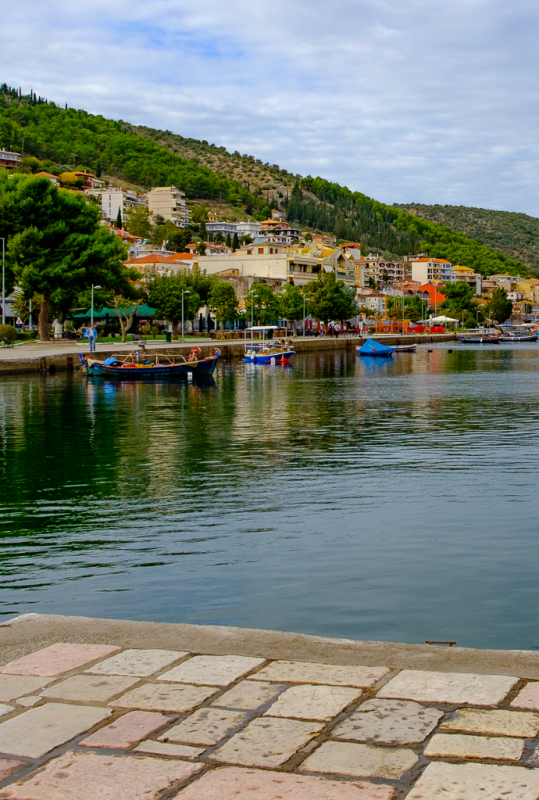Besides the village within the citadel, there must have been a caravanserai somewhere near the water, serving travellers, merchants, and soldiers using the only land route that connected western Central Greece and Epirus. Here they could find shelter and security for themselves and their goods. The caravanserai were usually spread at regular intervals dictated by the distance covered by the main pack animals of the day (camels, mules, donkeys, and horses), meaning a traveller could expect to find one every 30 km or so. Eventually, the caravanserai could act as growth poles that facilitated the growth of market towns and charitable institutions.

2. Amfilochia | The Caravan Serai
Under the Ottoman Empire, Amfilochia was known as Karvasaras (from caravanserai), due to the existence of a roadside inn serving the caravans that crisscrossed the old routes between Epirus and the rest of Greece.
Stories
Karvasaras
The ghost
No trace of the caravanserai survives, but we can reconstitute it based on similar buildings elsewhere. There would have been an imposing gateway leading to a large open rectangular court, whose size depended on the needs of local trade. Some caravans could consist of 20,000 camels but the volume of trade in this part of the world required far fewer animals. Wells supplied water for animals and humans, while a two-story building surrounded the courtyard. There were stables and storage space for the merchandise on the ground floor, while the travellers spent the night in rooms on the first floor. The windowless walls provided the caravanserai with a fortress-like appearance.
The battle of Karvasaras
In the fall of 1825 Karvasaras was the site of a bloody battle between the army of the Greek revolutionary leader Georgios Karaiskakis and the garrison left by Reşid Mehmed Pasha, also known as Kütahı, who was involved in the siege of Missolonghi. Karaiskakis’ goal was to assist the defenders of the city by regular attacks on the Ottoman supply lines. The battle was ferocious and resulted in Greek victory. Several Ottoman soldiers and horsemen lost their lives (numbers range from 60 to 300) but what was even more devastating was the loss of countless weapons, camels, and mules, as well as 500,000 piastres that were destined for the payment of the Ottoman army around Missolonghi.
The mousetrap
In early 1829, Ioannis Kapodistrias, governor of Greece, worked to capture the forts of western Greece, in an effort to secure a better deal on the borders of the Greek state. In mid-March, the Greeks landed north of Karvasaras and cut off all communications with the Ottoman military stronghold of Arta. The regional Ottoman garrisons (1300 men) gathered in Karvasaras and waited for reinforcements. Lack of food and the news that the Greeks controlled all the passes made them seek terms with the revolutionary leaders. Georgios Varnakiotis, who had a good relationship with most leaders of the Ottoman garrison, convinced them to surrender on March 26th, thus liberating the town.
Powered by Clio Muse Tours